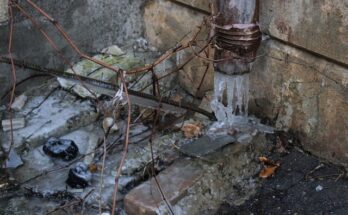When planning work on your roof, and interactions with a roofer or a roofing company, it is important to get the details of the terminology correct.
First, it is always best to use the right terminology. Second, you don’t want to make a simple mistake that will cause them to think you know less than you do.
While gutters and downspouts have the same overall purpose – redirecting water from your roof away from the building and the base of the building – their specific differences are important to know.
A gutter catches water
A gutter is a 3-sided tray, usually made of aluminum but sometimes made of copper or even terra cotta. It is placed below (not touching) the edge of the roof, with a small portion of its opening below the lip of the roof, but most of it protruding beyond the lip to catch larger amounts of water.
It is important that there is a space between the gutter and the roof to reduce the chance of water remaining in contact with building surfaces and materials.
This gutter / tray is very gently sloped toward one or more downspouts. The slope exists to discourage water from staying in the gutter beyond the time that it is raining or that snowmelt is occurring.
It is not too steep, for two reasons. First, the basic physics of water is that it seeks out lower ground by its very nature. It does not need a large slope to head in the direction you intend. Second, the slope is gentle because visually, houses and buildings convey structural soundness with straight lines and right angles. Imperceptibly slanted gutters can accomplish their goal without distracting from the appearance of the house.
A downspout directs water
A downspout is a fully enclosed circle or rectangle, made of the same material as the gutter, that collects and directs water down to whatever water collection or redirection device you use to protect your property.
Its purpose is to contain the collected water and quickly and efficiently redirect it down to the bottom of your structure.
Here it might bend and take water away from the side of the building, or it might take the water underground to a rainwater infrastructure below the house or building.




